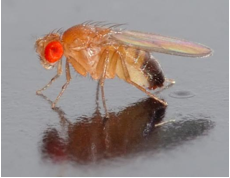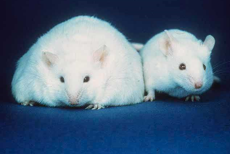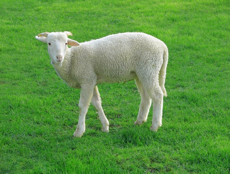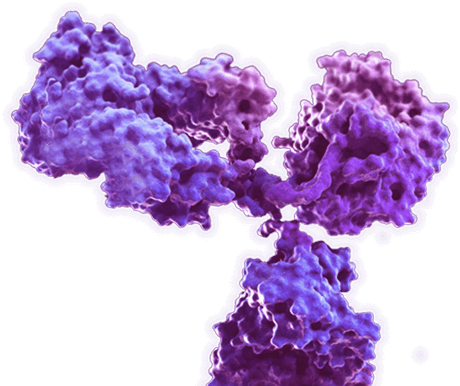Rare Disease
Researchers now have the tools to understand many of the world’s rarest diseases at a molecular level. Supported by in-house scientists and first-class technical platform, Creative Biolabs provides a full range of high-quality rare disease-related antibody products and services to facilitate your projects.
Background
Rare disease defined differently in different regions. Although rare diseases may manifest in different ways, most of them appear inheritance - the Mendelian inheritance. Research shows that about 72% of rare diseases have genetic basis. A range of issues causes the remainder, such as bacterial infections, viruses, allergies and the environment where a person lives. Drugs are developing all the time which can help provide relief, offer a cure, or form the basis of a treatment protocol that allows the afflicted to manage their conditions better.
Antibody therapy is one of them. The major advantage of antibody therapy of rare disease is its highly specific. It can reduce the risk of toxicity because antibody therapy is targeted. This is particularly important in rare disease therapy and research because long-term treatment is frequently needed. In fact, symptom management is the best possible outcome for rare disease, which means taking a drug or treatment for a very long time.
Research Area of Rare Disease in Different Species
- Drosophila melanogaster (D. melanogaster)

As model organism, D. melanogaster is extremely valuable to the study of human rare diseases:
- It is straightforward to produce the corresponding genetic variant in flies with CRISPR-Cas9 technology and determine whether a phenotype related to the human disease is produced.
- D. melanogaster provides the most efficient system for genome-wide genetic screens for modifier loci, which credits to comprehensive collections of publicly-available fly lines.
- Mouse
Mouse model provides key information on rare disease mechanisms and therapeutic strategies:

- Mouse model becomes a promising tool to design evidence-based therapies to halt the progression of the rare aminoacidurias caused by defects in amino acid transporters, such as Slc16a10–/– Slc7a8–/– mouse.
- The model that delivering genes encoding mutated proteins into wild-type mice using adeno-associated viruses, has been developed to study arrhythmogenic right ventricular cardiomyopathy.
- A model for human oculocutaneous albinism 1, Tyr mutant mouse, has been employed to characterize vision and hearing deficits.
- Sheep
As the significant species with respect to the modelling of rare genetic human disease, sheep are:

- Relatively outbred and much more similar to human compared with mice in genetic and physiological composition.
- Domestic animals, thus, make it cost-effective large animal models, with highly efficient agriculture systems already established. Besides, they are easy maintenance and acceptance of human handling, which saves both time and money.
- Except for cloning, sheep model for inherited diseases can be established from naturally occurring variants.
- Sheep model has been employed for many rare diseases, such as Batten disease, GM2 gangliosidosis, Gaucher disease, Meckel-gruber syndrome.
As a reliable provider in the antibody products, scientists at Creative Biolabs are committed to develop rare disease-related products and services to meet various requirement for our clients. For further details, please feel free to contact us.
Our provided featured target antibody products include the followings, but not limited to:
AibGenesis™ Mouse Anti-HDA6 Antibody (CBMOAB-04865HCB) (CAT#: CBMOAB-04865HCB)
-
- Host species: Mouse
- Species Reactivity: C. elegans (Caenorhabditis elegans), A. thaliana (Arabidopsis thaliana)
- Application: WB, ELISA
- Protein: Submitted name: UBP-type domain-containing protein
- Size: 0.5mg, 1mg, 200µg
- Conjugate: AP, APC, Biotin, Consult us more, Cy3, Cy5, Cy5.5, Cy7, FITC, HRP, NONE, PE, PerCP
- Alternative Names: Protein HDA-6, isoform c, hda-6
AibGenesis™ Mouse Anti-Digoxin Antibody (MOFAB-066W) (CAT#: MOFAB-066W)
-
- Host species: Mouse
- Application: ELISA
- Protein: Digoxin
- Size: 0.5mg, 100µg
- Conjugate: None
- Alternative Names: Digoxin, Digoxin
Rabbit Anti-GFAP (K39) Antibody (MOFY-0522-FY94) (CAT#: MOFY-0522-FY94)
-
- Host species: Rabbit
- Species Reactivity: Human, Mouse, Rat, Zebrafish
- Application: IHC, IHC-Fr, IHC-P, WB
- Protein: Glial Fibrillary Acidic Protein
- Size:
- Conjugate:
- Alternative Names: Glial Fibrillary Acidic Protein, Intermediate Filament Protein, ALXDRD
AibGenesis™ Mouse Anti-CAV-1 Antibody (MOFY-0522-FY213) (CAT#: MOFY-0522-FY213)
-
- Host species: Mouse
- Species Reactivity: Canine, C. elegans (Caenorhabditis elegans)
- Application: Neut
- Protein: Caveolin-1
- Size: 100µg
- Conjugate: NONE
- Alternative Names: Caveolin-1, cav-1
AibGenesis™ Mouse Anti-CAV-2 Antibody (MOFY-0522-FY214) (CAT#: MOFY-0522-FY214)
-
- Host species: Mouse
- Species Reactivity: Canine
- Application: Neut
- Protein: Canine Adenovirus Type 2 (CAV-2)
- Size:
- Conjugate:
- Alternative Names: CAV-2, Canine Adenovirus Type 2 (CAV-2)
Pig Anti-CPI-2 Antibody (MOFY-0522-FY217) (CAT#: MOFY-0522-FY217)
-
- Host species: Pig
- Species Reactivity: Canine
- Application: IF
- Protein: Cystatin C
- Size: 2mL
- Conjugate: NONE
- Alternative Names: Cystatin C, Protein CPI-2, isoform a, cpi-2
AibGenesis™ Mouse Anti-CPI-2 Antibody (MOFY-0522-FY218) (CAT#: MOFY-0522-FY218)
-
- Host species: Mouse
- Species Reactivity: Canine
- Application: IF, ELISA
- Protein: Cystatin C
- Size: 100µg
- Conjugate: NONE
- Alternative Names: Cystatin C, Protein CPI-2, isoform a, cpi-2
AibGenesis™ Mouse Anti-CPV Antibody (MOFY-0522-FY219) (CAT#: MOFY-0522-FY219)
-
- Host species: Mouse
- Species Reactivity: Canine, Canine Parvovirus
- Application: IF, Neut
- Protein: Canine Parvovirus (CPV)
- Size: 100µg
- Conjugate: NONE
- Alternative Names: CPV, Canine Parvovirus (CPV)
AibGenesis™ Mouse Anti-CAEV-63 Antibody (MOFY-0522-FY220) (CAT#: MOFY-0522-FY220)
-
- Host species: Mouse
- Species Reactivity: Caprine, Ovine
- Application: IF, IP
- Protein: Caprine Arthritis Encephalitis Virus
- Size:
- Conjugate:
- Alternative Names: CAEV-63, Caprine Arthritis Encephalitis Virus
AibGenesis™ Mouse Anti-CAEV-63 / CAEV-Co Antibody (MOFY-0522-FY221) (CAT#: MOFY-0522-FY221)
-
- Host species: Mouse
- Species Reactivity: Caprine, Ovine
- Application: IF, IP
- Protein: Caprine Arthritis Encephalitis Virus (CAEV) MAb CAEV-63, CAEV-Co
- Size: 100µg
- Conjugate: NONE
- Alternative Names: CAEV-63 / CAEV-Co, Caprine Arthritis Encephalitis Virus (CAEV) MAb CAEV-63, CAEV-Co
AibGenesis™ Mouse Anti-CAEV-63 / CAEV-Co Antibody (MOFY-0522-FY223) (CAT#: MOFY-0522-FY223)
-
- Host species: Mouse
- Species Reactivity: Caprine, Ovine
- Application: IF, IP
- Protein: Equine Arteritis Virus (EAV)
- Size: 100µg
- Conjugate: NONE
- Alternative Names: CAEV-63 / CAEV-Co, Equine Arteritis Virus (EAV)
AibGenesis™ Mouse Anti-EAV Antibody (MOFY-0522-FY224) (CAT#: MOFY-0522-FY224)
-
- Host species: Mouse
- Species Reactivity: Equine
- Application: IF, WB
- Protein: Equine Arteritis Virus (EAV)
- Size:
- Conjugate:
- Alternative Names: EAV, Equine Arteritis Virus (EAV)
Caprine Anti-EHV-1 Antibody (MOFY-0522-FY225) (CAT#: MOFY-0522-FY225)
-
- Host species: Caprine
- Species Reactivity: Equine
- Application: IF
- Protein: Equine Herpesvirus Type 1 (EHV-1/ERV)
- Size:
- Conjugate:
- Alternative Names: EHV-1, Equine Herpesvirus Type 1 (EHV-1/ERV)
AibGenesis™ Mouse Anti-Neospora caninum gp65 Antibody (MOFY-0522-FY226) (CAT#: MOFY-0522-FY226)
-
- Host species: Mouse
- Species Reactivity: Bovine, Canine, Neospora caninum
- Application: IF, ELISA, IHC, WB, DB
- Protein: Neospora caninum gp65
- Size:
- Conjugate:
- Alternative Names: Neospora caninum gp65
AibGenesis™ Mouse Anti-PI-3 p69 Antibody (MOFY-0522-FY227) (CAT#: MOFY-0522-FY227)
-
- Host species: Mouse
- Species Reactivity: Bovine
- Application: Neut, HA, IF
- Protein: Parainfluenza Virus Type 3 (PI-3) MAb p69
- Size: 100µg
- Conjugate: NONE
- Alternative Names: Parainfluenza Virus Type 3 (PI-3) MAb p69, PI-3 p69
AibGenesis™ Caprine Anti-PI-3 p69 Antibody (MOFY-0522-FY228) (CAT#: MOFY-0522-FY228)
-
- Host species: Caprine
- Species Reactivity: Bovine
- Application: IF
- Protein: Parainfluenza Virus Type 3 (PI-3) MAb p69
- Size: 2mL
- Conjugate: NONE
- Alternative Names: Parainfluenza Virus Type 3 (PI-3) MAb p69, PI-3 p69
AibGenesis™ Mouse Anti-PRRSV Antibody (MOFY-0522-FY231) (CAT#: MOFY-0522-FY231)
-
- Host species: Mouse
- Species Reactivity: Bovine, Canine, Ovine, Cervine
- Application: IF, IP
- Protein: Porcine Reproductive and Respiratory Syndrome Virus (PRRSV)
- Size:
- Conjugate:
- Alternative Names: PRRSV, Porcine Reproductive and Respiratory Syndrome Virus (PRRSV)
AibGenesis™ Mouse Anti-PrP IHFG Antibody (MOFY-0522-FY232) (CAT#: MOFY-0522-FY232)
-
- Host species: Mouse
- Species Reactivity: Bovine, Ovine, Cervine
- Application: ELISA, IHC, WB
- Protein: Prion Protein IHFG
- Size:
- Conjugate:
- Alternative Names: Prion Protein IHFG, PrP IHFG
AibGenesis™ Mouse Anti-PRV gIII Antibody (MOFY-0522-FY233) (CAT#: MOFY-0522-FY233)
-
- Host species: Mouse
- Species Reactivity: Bovine, Canine, Ovine, Cervine, Feline, Mouse, Pig, Equine, Caprine, Camelid
- Application: IF, IP
- Protein: Pseudorabies Virus (PRV) MAb gIII
- Size:
- Conjugate:
- Alternative Names: PRV gIII, Pseudorabies Virus (PRV) MAb gIII
AibGenesis™ Mouse Anti-MSP-1 Antibody, IgG1 (MOFY-0922-FY244) (CAT#: MOFY-0922-FY244)
-
- Host species: Mouse
- Species Reactivity: P. falciparum
- Application: WB
- Protein: Plasmodium falciparum MSP-1
- Size: 200µg
- Alternative Names: P. falciparum MSP-1, Plasmodium falciparum MSP-1
AibGenesis™ Mouse Anti-P. falciparum infected RBCs Antibody, IgM (MOFY-0922-FY414) (CAT#: MOFY-0922-FY414)
-
- Product Overview: MOFY-0922-FY414 is a mouse antibody against P. falciparum infected RBCs. It can be used for P. falciparum infected RBCs detection in Immunofluorescence.
- Host species: Mouse
- Species Reactivity: P. falciparum
- Application: IF
- Protein: Plasmodium falciparum
- Size:
- Alternative Names: P. falciparum infected RBCs, Plasmodium falciparum
AibGenesis™ Mouse Anti-Antibody, IgM (MOFY-0922-FY415) (CAT#: MOFY-0922-FY415)
-
- Host species: Mouse
- Species Reactivity: P. falciparum
- Application: WB, ELISA
- Protein: Plasmodium falciparum
- Size: 200µg
- Alternative Names: P. falciparum, Plasmodium falciparum
AibGenesis™ Mouse Anti-S-antigen Antibody, IgG1 (MOFY-0922-FY424) (CAT#: MOFY-0922-FY424)
-
- Host species: Mouse
- Species Reactivity: P. falciparum
- Application: WB
- Protein: Plasmodium falciparum S-antigen
- Size: 200µg
- Alternative Names: P. falciparum S-antigen, Plasmodium falciparum S-antigen
To download a Certificate of Analysis, please enter a lot number in the search box below. Note: Certificate of Analysis not available for kit components.
Lot Number

